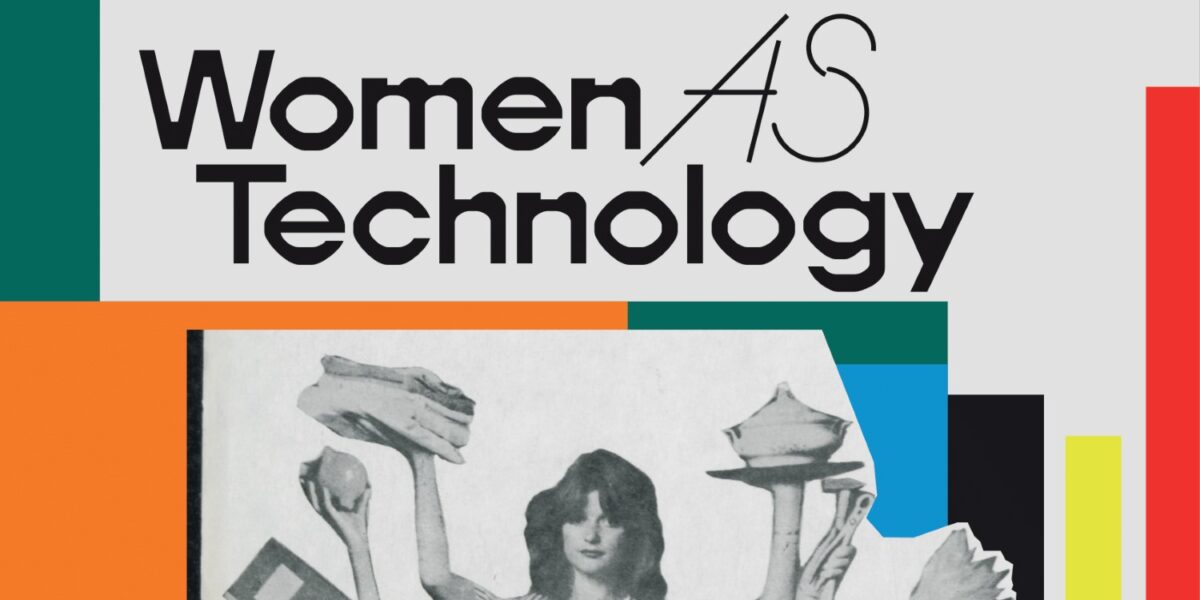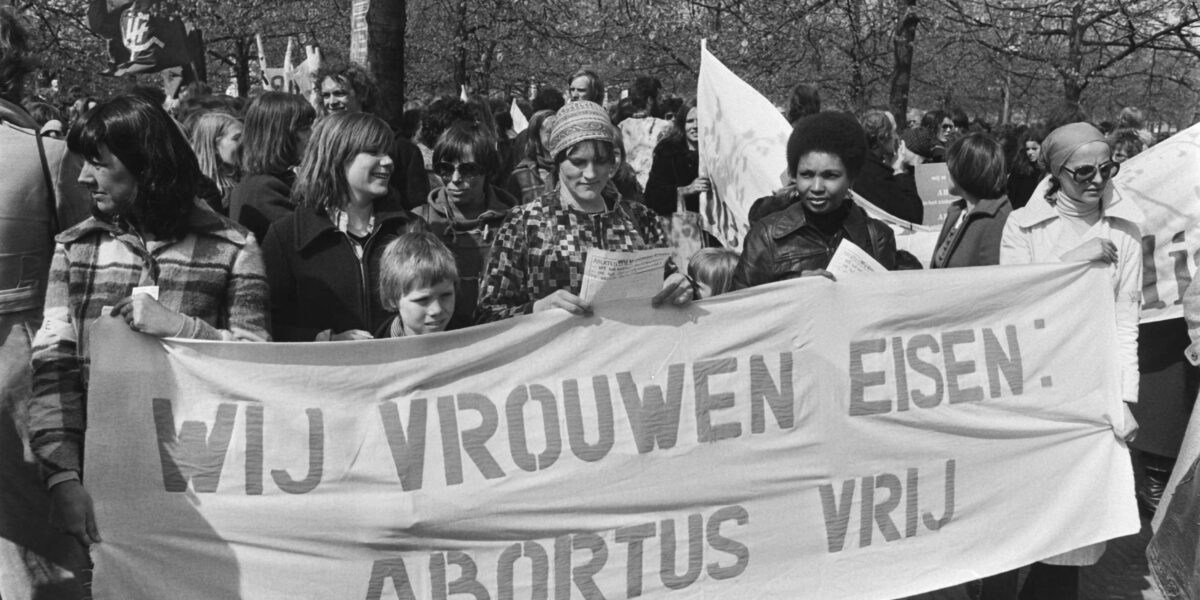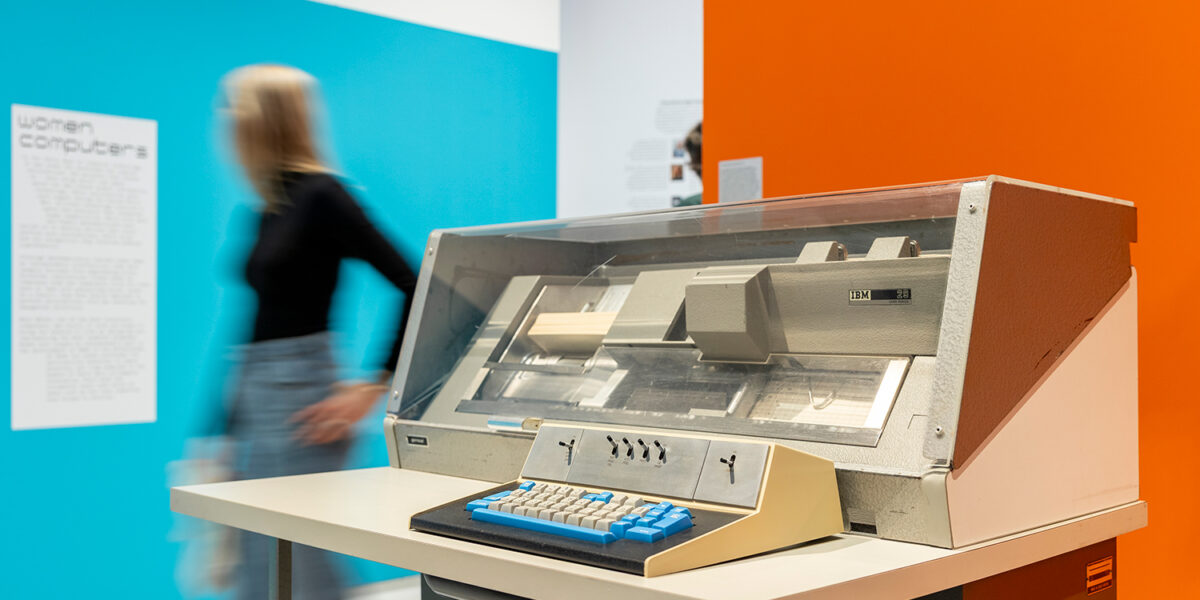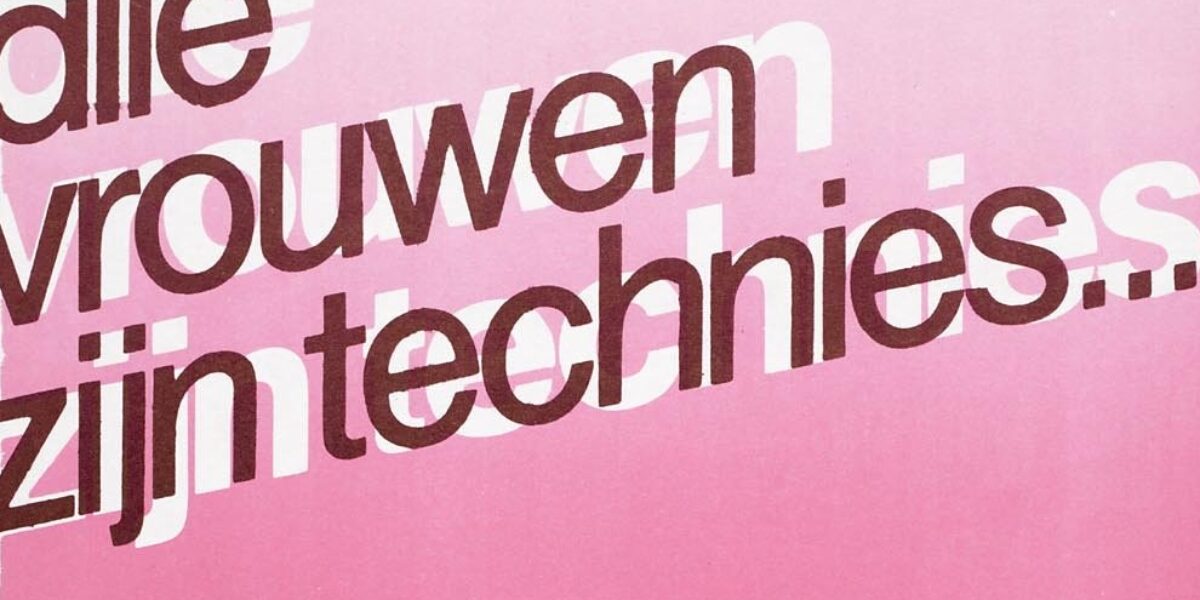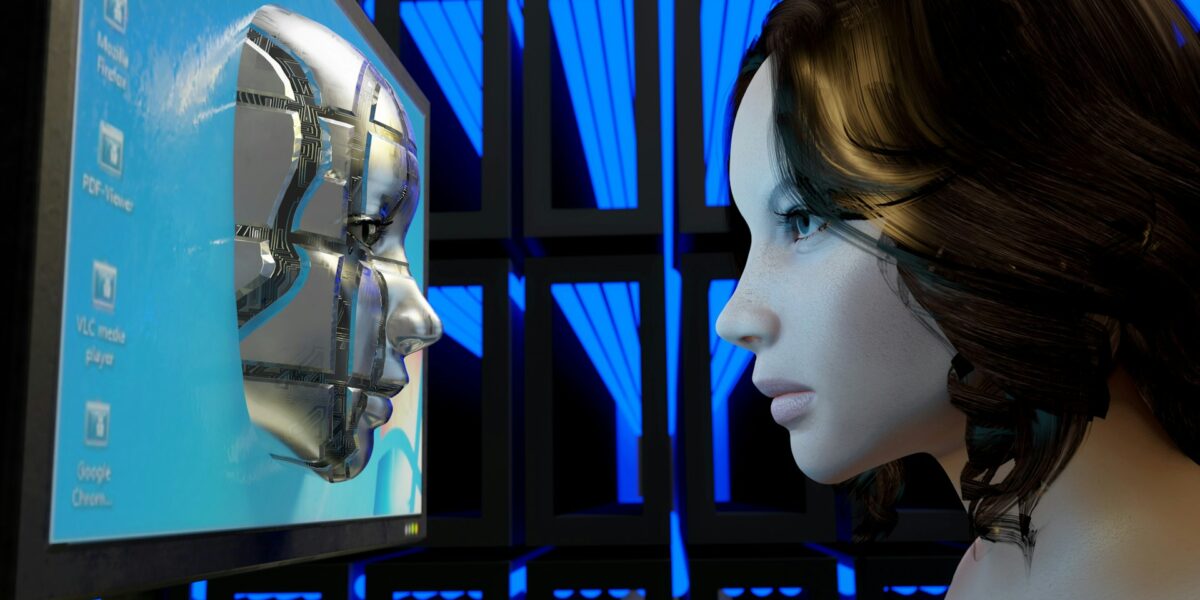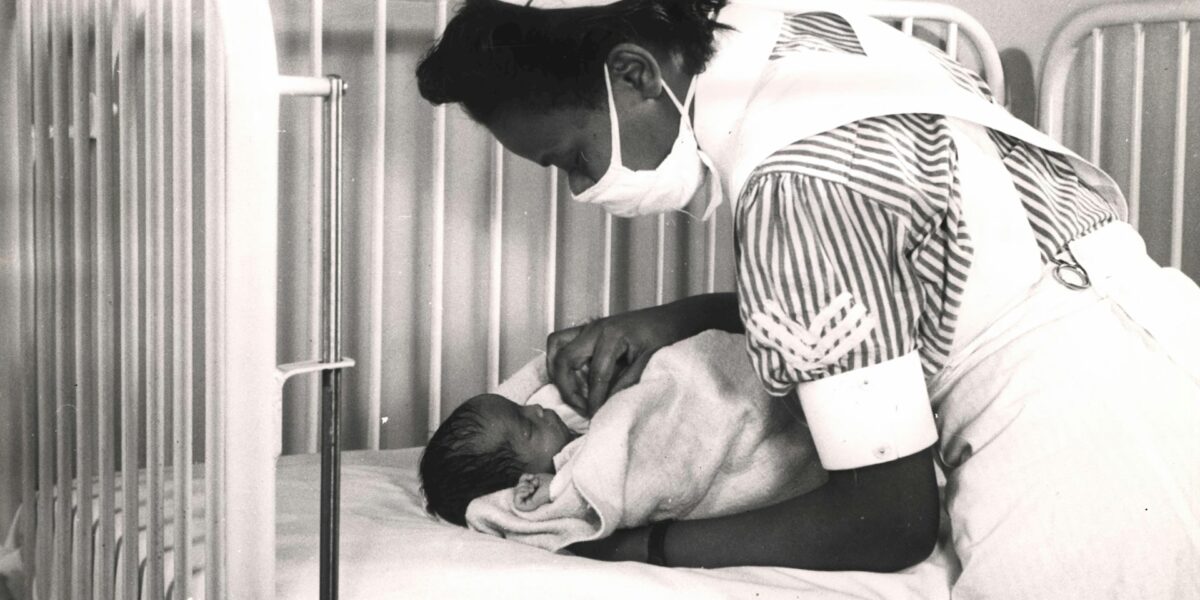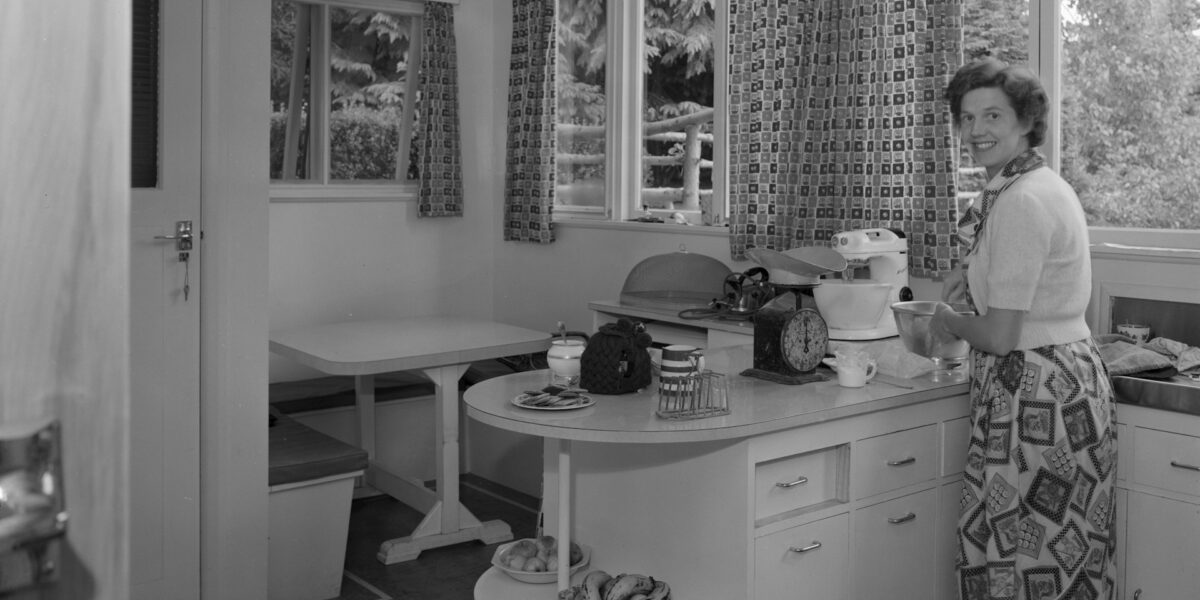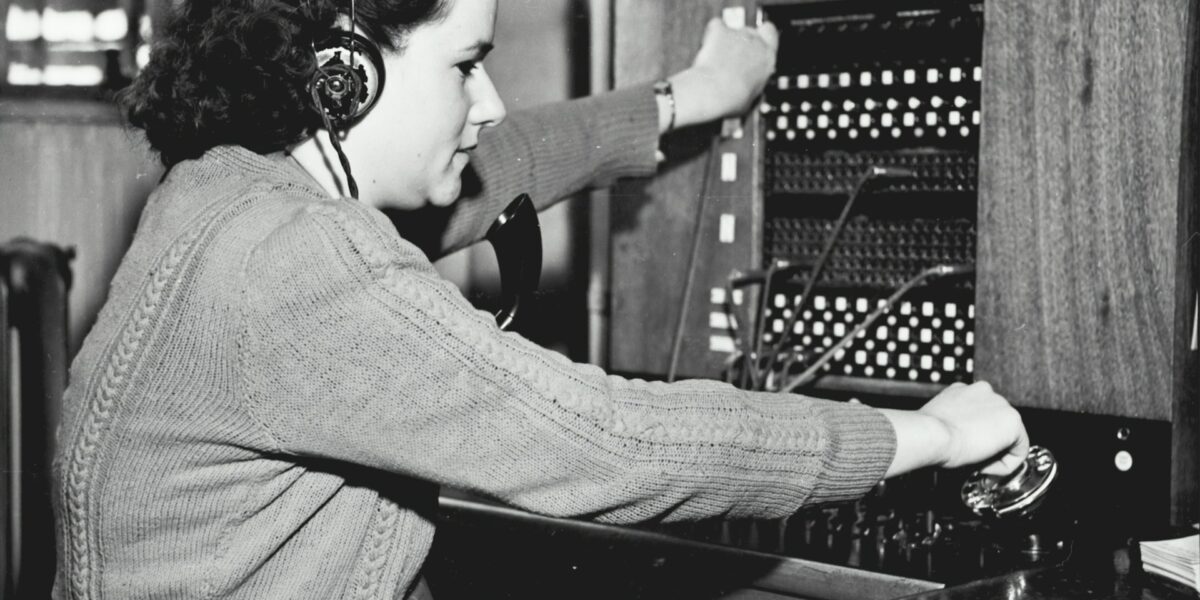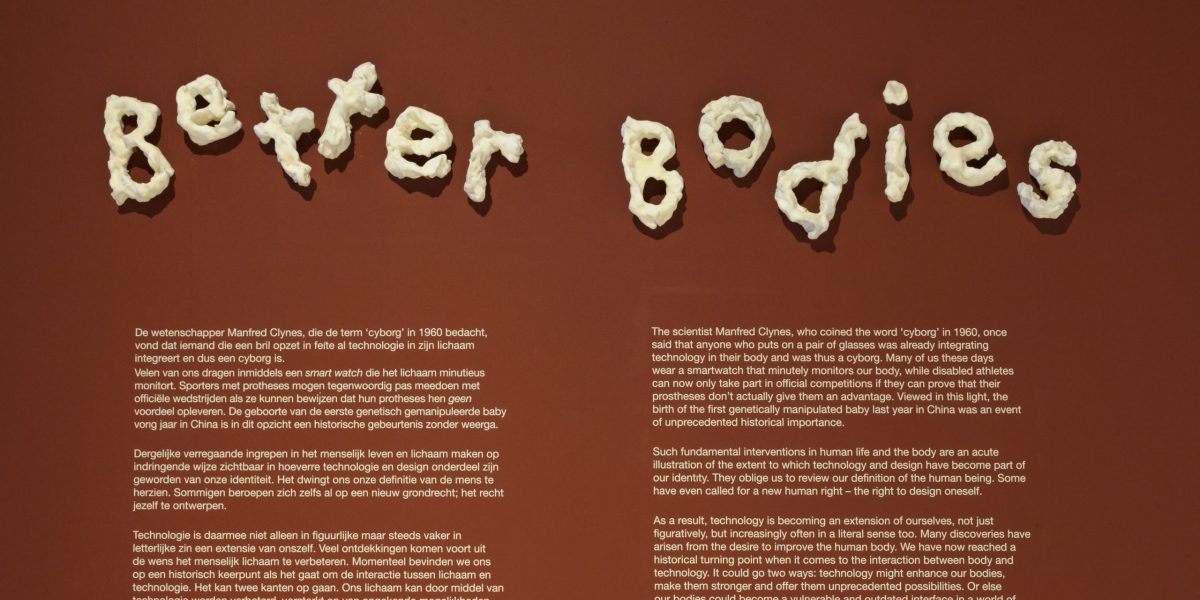The exhibition Women as Technology highlights several women from past and present. Below you will find an overview.
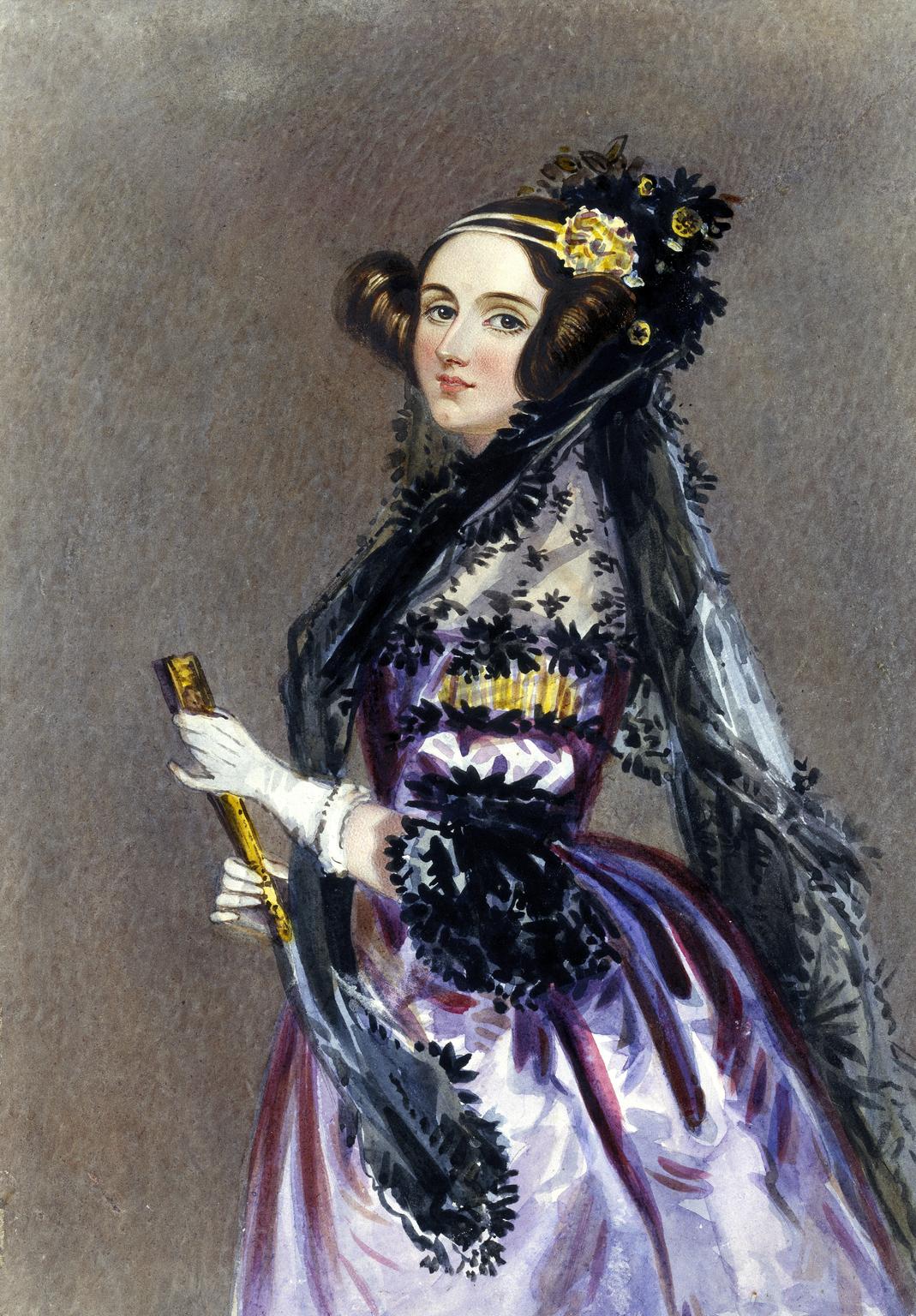
The first programmer
Ada Lovelace (1815–1852) is seen as the first programmer. In 1843, she wrote the first algorithm for a machine – the Analytical Engine created by Charles Babbage (1791–1871). She did so under her initials (A.A.L.), as women were barely recognized in science at that time. Her commentary on an article by Luigi Menabrea offers a prescient view of what computers might become: a legacy that continues to influence computer science to this day.
Designer of space
Galina Balashova (1931) is the architect and designer behind the interior of the Soviet spacecraft Soyuz and space station Mir. Working in a male-dominated aerospace industry, she shaped the human side of technology, from ergonomics to the use of colour. Her work combined engineering with aesthetics at a high level, yet remained below the radar for decades. It is only recently that she has been acknowledged as a pioneer of space design.
Challenging big tech
Meredith Whittaker (1983) is committed to the fair and safe use of technology. She worked at Google until 2019, during which time she jointly organized the global Google Walkout in November 2018, when over 20,000 employees protested against the company’s policy on sexual harassment and other ethical issues. Since leaving Google, she has focused on digital rights and privacy. As co-founder of the AI Now Institute and president of the encrypted messaging service Signal, she advocates for technology that protects people rather than controlling them.
Programmable language
Grace Murray Hopper (1906–1992) was an American pioneer in computer science. In the early 1950s, she made it possible to give computers instructions in plain language by developing the compiler – a program that converts those instructions into computer language. She also contributed to the design of COBOL, an early programming language. Hopper’s work made programming much more understandable and laid the foundation for the way we interact with computers today.
Mother of the Internet
Hedy Lamarr (1914–2000) was both a famous actress and a brilliant inventor. During the Second World War, she and the composer George Antheil developed a system to secure radio-controlled weapons. Their idea was ‘frequency hopping’, which later formed the basis for technologies including WiFi, Bluetooth and GPS. Her innovative mind was not acknowledged for decades, making her a hidden icon of technology.
Pioneer of home technology
Lillian Gilbreth (1878–1972) was a pioneer in both engineering and psychology, and one of the first female engineers in the United States. She applied time-and-motion studies not only to factories but to households as well. With 12 children, she and her husband Frank managed to combine theory with practice. Their legacy blended an optimized kitchen layout with recognition of the fact that household work could be taken seriously as an occupation with its own expertise.
The Discontent of Women
Joke Smit (1933–1981) was a prominent Dutch feminist, known for her influential essay Het onbehagen bij de vrouw (‘The Discontent of Women’; 1967). In it, she voiced the sense of dissatisfaction felt by women limited to the role of housewife, whatever other talents and ambitions they might have. Smit’s article paved the way for the second wave of feminism in the Netherlands, helping to turn the personal into a political force.
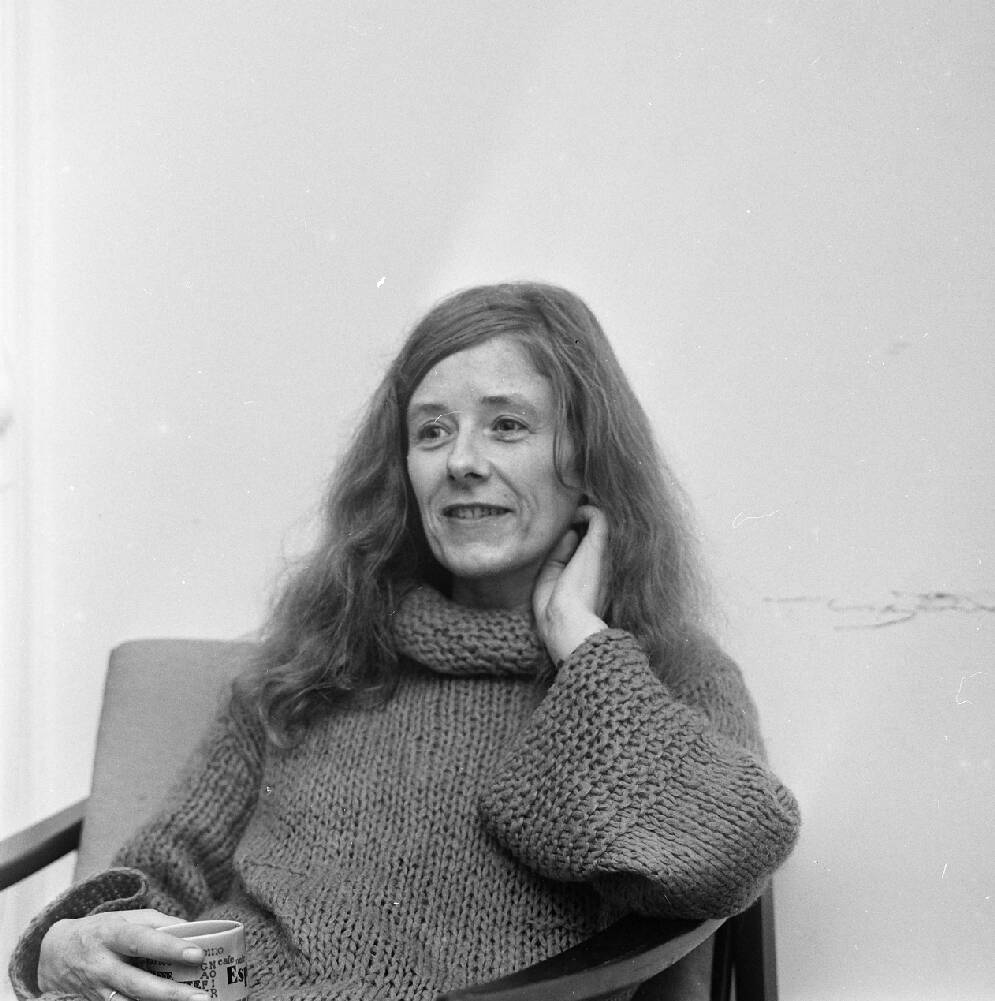
The housewife as producer
Marga Bruyn-Hundt (1931–1998) was a Dutch economist and feminist. In 1970, she published the influential article De huisvrouw als producente (‘The Housewife as Producer’), in which she argued that domestic work – usually performed unpaid by women, should be recognized as a form of production. Bruyn-Hundt believed that housewives’ work ought to be compensated, not only to acknowledge its economic value, but also to reduce inequality between men and women.
Architect of emancipation
Margarete Schütte-Lihotzky (1897–2000) worked on social housing in the progressive Frankfurt of the 1920s. Her most famous design – the Frankfurter Küche (Frankfurt Kitchen) – was based on efficiency and inspired by industrial workspaces. She set out to alleviate and optimize the daily lives of women. Schütte-Lihotzky’s functional, thoughtful designs contributed to the modernist ideal of architecture as a driver of social change and greater equality in the home and society.
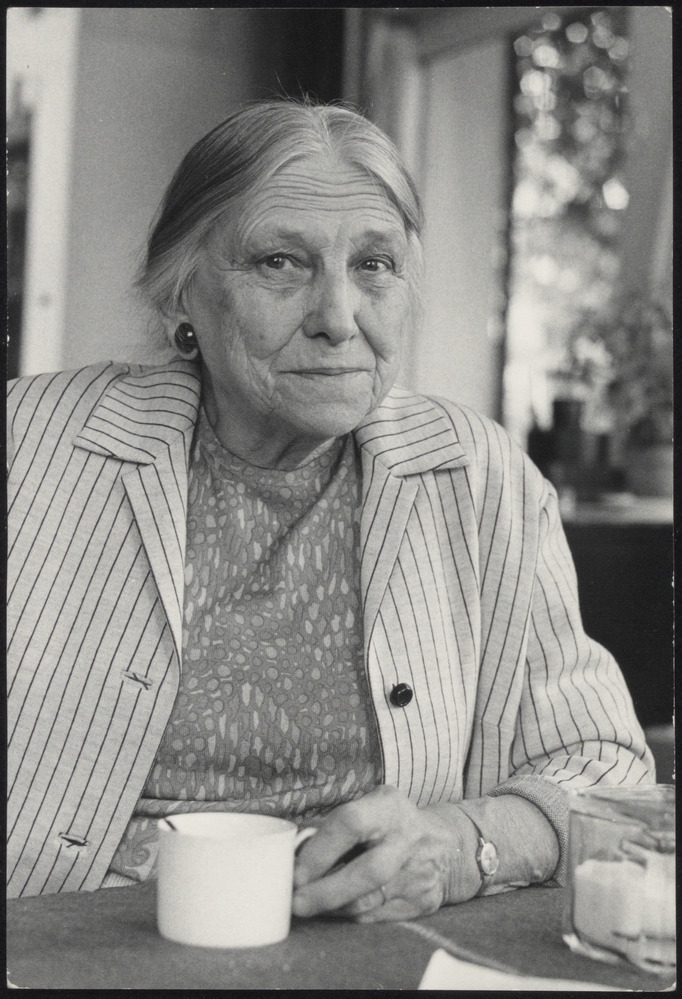
Designer of modern living
Truus Schröder-Schräder (1889–1985) was an interior designer with a firm of her own. After her husband died in 1923, she began to work independently from the Rietveld Schröder House (1924), which she had jointly designed with Gerrit Rietveld. Her vision of open, flexible and unconventional living was crucial to its conception and lifestyle would play an equally important part in her various commissions. New research has shown that her role as designer was essential, and that she collaborated on several briefs with Gerrit Rietveld (1888-1964). In other words, her influence on modernist architecture was greater than would be acknowledged for many years.
Midwife of Friesland
The Dutch midwife Catharina Schrader (1656–1746) assisted in more than 3000 births in Friesland and kept detailed records of her work. Besides the medical procedures, her reports describe the fears, doubts and decisions of mothers and midwives. Schrader’s archive demonstrates how important female knowledge was at a time when science was predominantly a male domain. Her notes tell us a great deal about obstetrics in the early modern period.
Female gynaecologist
Catharine van Tussenbroek (1852–1925) was the first woman in the Netherlands to work as a gynaecologist. The country’s second female doctor after Aletta Jacobs, she committed herself to women’s health and rights. Her work broke with existing medical taboos surrounding contraception and menstruation. Van Tussenbroek was an active member of the Dutch Association for Women’s Suffrage and campaigned for women’s right to vote, sex education and equal access to education.
Inclusive maternity care
Dr Bahareh Goodarzi (1985) is a midwife, scientist and lecturer whose work focuses on inclusive maternity care. She researches how gender, ethnicity and migration background influence the experience of pregnancy and childbirth, highlighting examples of exclusion in healthcare and how things might be done differently. She draws on both practice and science to call for a model of care which allows scope for both diversity and equality.
The art of giving birth
The midwife and teacher Madame du Coudray (c. 1712–1794) designed a birthing manikin, which she used to train thousands of midwives in France. She was tasked by King Louis XV with travelling around the country with her training model and personally compiled an instruction book to spread practical knowledge at a time of high maternal and infant mortality. She modernized the profession and provided women with greater influence within a medical field that was becoming increasingly male-dominated.
The sailing doctor
Rebecca Gomperts (1966) is a doctor and founder of the Dutch organizations Women on Waves and Women on Web. She sailed a ship equipped as a clinic to countries in which abortion was prohibited, to offer women safe care in international waters. Her work was later expanded to include a digital clinic that informs and supports women all over the world. Her innovative approach connects healthcare, technology and law.
Vibrators for Everyone
Betty Dodson (1929–2020) was an American sexologist who led Bodysex workshops in the 1970s. Women explored their bodies together using mirrors and the Hitachi Magic Wand as a tool for self-stimulation. Dodson helped make masturbation a topic of open discussion, enabling thousands of women to experience sexual autonomy. Her work normalized the use of vibrators for women’s pleasure and shattered taboos surrounding female sexuality, desire and self-love.
The science of pleasure
Ellen Laan (1958–2022) was a sexologist, psychologist and professor at the University of Amsterdam. She committed herself to securing equal attention for male and female sexuality in healthcare and research. Laan’s groundbreaking study of physical arousal in women proved that it does not always coincide with desire. Her slogan ‘only men have vaginal orgasms’ highlighted the fact that the most important organ for female pleasure is the clitoris.
Memories of a working life
The twin sisters Martine and Louise Fokkens first worked as prostitutes in Amsterdam’s red light district in the 1960s. Their unique story was captured in the documentary Ouwehoeren, in which they talk candidly about their life and work. Sharing their years of experience, the women offer an unfiltered perspective on prostitution and the changes the city has seen over that time. Their personal account is a powerful testament to resilience and the breaking of taboos.
Warrior for queer rights
Marsha P. Johnson (1945–1992) was an African-American trans woman and drag queen, and a key figure in the rise of the LGBTQ+ movement in the United States. She took part in the Stonewall Riots in 1969 and advocated for homeless queer youth and people with AIDS. Her high profile, activism and humanity made her an icon of resistance, self-expression and radical solidarity.
Fantasy for a different world
Ursula K. Le Guin (1929–2018) and Octavia E. Butler (1947–2006) used science fiction to look at the world differently. Le Guin wrote about equality, nature and living together without power structures, while Butler’s stories deal with racism, survival and connectedness. These authors show that tales of the future are not just about technology but about people and choices too. Their books open our minds to a more just world.
